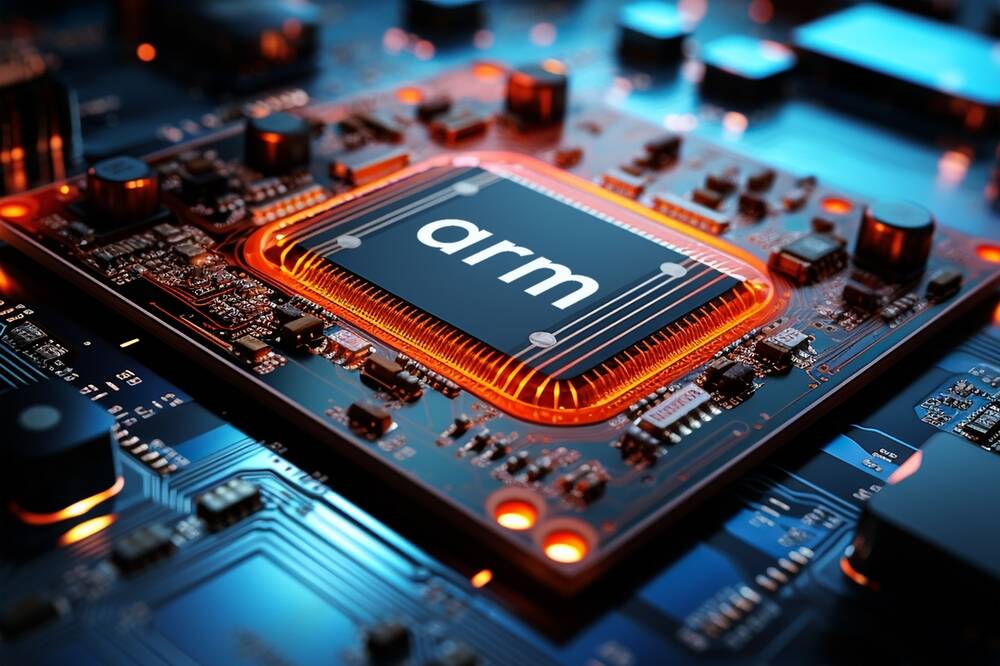Tech
Arm CEO aims to conquer half the Windows world in 5 years

Computex Achieving a 50 percent market share among Windows PCs within five years is on the cards for Arm, according to CEO Rene Haas.
The leader of the CPU architecture designer expressed his optimism in an interview with Reuters, in relation to the recent launch of Qualcomm’s Arm-based Snapdragon X Elite CPUs. The processors will power a new generation of Windows AI PCs, which have been hyped as the next big thing for the beleaguered PC market.
Arm chief exec scored $70M in New York IPO bonanza
Getting to 50 percent market share of Windows PCs will presumably involve both laptops, the current focus for Arm-based Windows devices, as well as desktops. Qualcomm CEO Cristiano Amon has heavily implied that the Snapdragon X Elite would have some sort of presence in desktops. In his Computex keynote today, a rendering of a mini-PC was briefly shown; Qualcomm also offers a Snapdragon X Elite dev kit in the mini-PC form factor.
However, considering that virtually all of today’s Windows users are running x86 CPUs, surpassing 50 percent market share in five years is probably unrealistic.
“Getting to 50 percent in five years would require some pretty massive developments in the market,” Canalys analyst Kieren Jessop told The Register. “Today, around 8-10 percent of quarterly PC shipments are Arm-based, which is almost entirely Apple Silicon.”
“We’ve previously made the prediction that 30 percent of the PC market will be Arm-based by 2026. I think to push that any higher in a five-year timeframe would require something along the lines of Intel introducing their own Arm chip, which seems unlikely,” Jessop added.
Keeping in mind that Haas specifically said Windows PCs, not just PCs in general, it seems almost impossible for Arm to achieve 50 percent by 2029 based on Canalys’s forecast. And don’t count on an Arm-based chip from Intel changing the game any time soon, considering that CEO Pat Gelsinger thinks its rival is “pretty insignificant” for the PC.
Supplanting Intel in the PC market will be a tough task despite its lack of leadership, evidenced by AMD’s struggles to get ahead. Since 2018, AMD’s market share has only gradually ticked up from roughly 14 percent to around 20 percent by the end of 2023, according to Mercury Research. That’s in spite of AMD having very competitive processors in that timeframe, particularly from 2019 to 2021 during the Zen 2 and Zen 3 generations.
For Arm in particular, competing against Intel as well as AMD will be particularly challenging since the PC market has been based on x86 CPUs since the 1981 debut of the original IBM Personal Computer, which used the Intel 8088.
“Shifting to a new architecture may see some resistance from the ecosystem, and competition from x86 incumbents like Intel and AMD,” Jessop said.
Do you really need that GPU or NPU for your AI apps?
Gartner research director Ranjit Atwal told The Register: “Considering that IT departments are typically risk-averse, there needs to be more compelling reasons beyond extended battery life to prompt a huge shift towards Arm.”
However, Arm’s growth in the Windows ecosystem won’t be slow either, according to Canalys. Qualcomm’s Snapdragon X Elite chips will be a major factor, as would a rumored Nvidia-made Arm processor for the PC, Jessop said. Plus, Microsoft is tying its push for AI PCs with Arm PCs, and is supporting the Windows ecosystem on Arm both with emulation and ports for apps originally made to run on x86 processors. ®
More from Computex: We’re the Ryzen force in CPUs for AI PCs, says AMD.







:max_bytes(150000):strip_icc()/roundup-writereditor-loved-deals-tout-f5de51f85de145b2b1eb99cdb7b6cb84.jpg)


